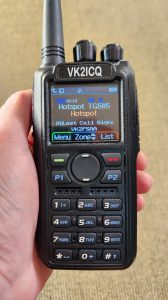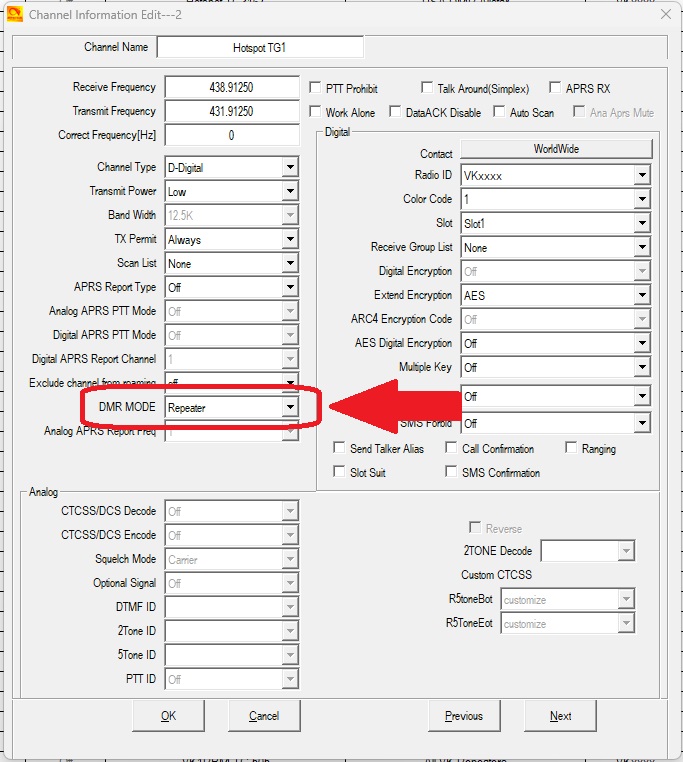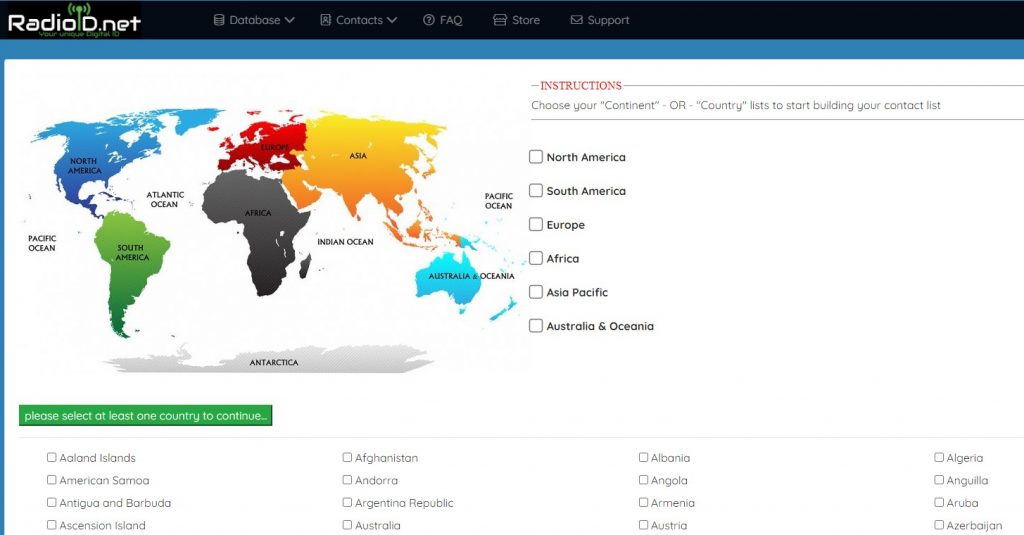Attached for download is the codeplug developed by me (Paul VK2ICQ) that was loaded onto many Anytone 878I and 878II handheld radios during the 2024 ORARC Field Day as part of the club’s popular ‘DMR Clinic’. The codeplug features all VKDMR DMR repeaters nationwide, all Analog FM repeaters, and some auxiliary services. I believe this codeplug may also work on the 578 Mobile & 868 HT too.
The ZIP file contains 3 folders:
Import – CSV files and a corresponding LST file, which is used by the Anytone CPS software’s ‘import’ feature. Anytone radios should be reset after each firmware and corresponding CPS upgrade, and the radios freshly programmed to ensure no abnormalities. This export was done from Firmware/CPS version 3.03, but providing the import files enables the codeplug to be imported into later firmware versions without issue (something that is NOT guaranteed had I just provided a saved .RDT codeplug file). You MAY be able to use this codeplug on earlier firmware, but I wouldn’t recommend it (upgrade your radio).
Settings – 17 screenshots of how I have my radio’s settings configured. One bugbear of the Anytone software is that the settings cannot be exported/imported, so you’ll need to set them manually yourself. The way we want our radios to work for us is very much a matter of personal preference, and my chosen settings may not be to your liking, but I believe they are probably a good baseline – YMMV.
Background – A single .bmp background image I like to use. Anytone firmware releases include a folder called ‘D878UVscreens’, and this image was taken from that folder. You may find other backgrounds you prefer in that folder, or you may prefer no background image at all. I like this background for its cleanliness and simplicity – I feel the Anytone does not need a busier display than it already has!
At a high-level, the programming process is as follows:
- Download the latest firmware for your radio, install the CPS, and upgrade your radio.
- Download and extract the ZIP archive to reveal the 3 folders.
- Open the latest CPS software and start a new file [File – New].
- Import the codeplug using [Tool – Import – Import from File List]. Select the ‘Anytone.LST’ file from the ‘Import’ folder you extracted in step 2.
- Set your DMR ID & Callsign by expanding [Digital – Radio ID List]. Replace the ‘5059999’ and ‘VKxxxx’ placeholders.
- Refer to the 17 screenshot files and replicate the desired settings to your codeplug by expanding [Common Setting – Optional Setting].
- If you’d like to set the background, load the image into the radio using [Tool – Standby BK Picture 1]. You will need the radio on and connected via the programming cable to upload the file.
- Program the radio as normal using [Program – Write to Radio]. Save the file in the CPS for future use.
You will likely also want to:
- Program your hotspot frequency if you have one. The default channels are set up for a duplex hotspot using 438.9125 (-7 MHz). You can edit the channels in the CPS after importing, or use Excel and edit the ‘Channels.CSV’ file before import. If using Excel, change columns [C] and [D] to reflect your chosen TX & RX frequencies for channels 2-50. If you have a simplex hotspot, set TX & RX to be the same frequency. You also need to tell the CPS whether you’re using a simplex or duplex hotspot – do this in the CPS using [DMR Mode], setting it to either [Repeater] (for duplex hotspots) or [DMO/Simplex] for each hotspot channel. If you’re using Excel, you can edit each channel column [AT] with the header ‘DMR Mode’ where 0 = ‘simplex’ and 1 = ‘repeater’.
- Download the Digital Contact List. This codeplug ships with an empty Digital Contact List as it is out of date moments after it’s downloaded. The Digital Contact List contains callsigns, names, and addresses for all Amateur DMR operators. The 878 model I will hold 200,000 contacts. The 878 model II will hold 500,000. At the time of writing, there are approximately 260,000 contacts in total, so Model I users will need to trim the database to make it fit by removing countries of least interest. I would recommend using RadioID.net’s excellent Contact Generator, but it does require a yearly subscription (which is worth it for DMR nuts like myself). Alternatively, KF5IW’s list builder is free.
- Perform further customizations. This codeplug does not include advanced features such as GPS Roaming, Scan Lists, APRS Setup, or Brandmeister Network support. You may like to configure and enable these features as you become familiar with the radio.
DMR operation requires knowledge of DMR principles, and a degree of troubleshooting and codeplug customization is expected. The steepness of the learning curve varies for all operators, but like all facets of amateur radio, don’t expect to ‘get it’ without doing some research. This codeplug is provided ‘as is,’ and it is not possible to assist with any technical difficulties you may encounter. Comments are welcome for any suggestions you may have or errors you may find.
- Thanks to Ian VK2IDL for his excellent Retevis RT3S and TYT MD-UV380 & OpenGD77 Codeplugs, on which some of this codeplug is based. If you have one of these radios, do the OpenGD77 upgrade and load Ian’s codeplug.
- Here is everything technical you ever wanted to know about the Anytone 8×8 radios (thanks Jason VK7ZJA, now SK 😞).
- Buy your Anytones from QSLComms – thank you to Mark for your ongoing support of our Field Day!



